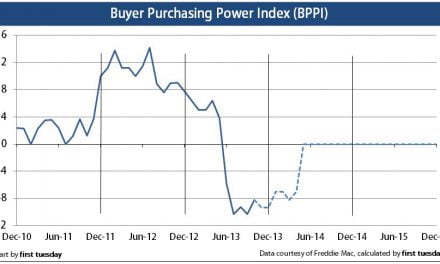A higher rate of divorce is bad news no matter how you slice it – or is it?
Data reveal that 2.4 million couples divorced in 2012. After plummeting to a 40-year low at the height of the 2007-2009 Great Recession, the divorce rate has climbed for the third year in a row, according to the U.S. Census Bureau (the Census). In 2012, 9.8 percent of Californians had been divorced at some point and not yet remarried.
Researchers attribute the spike in marital splits to an improving economy. Many couples who wanted to divorce during the recession put it off due to economic necessity, each partner unable to individually shoulder the cost of separate lives. Research from the University of Arizona has shown that for every 1% increase in unemployment, the divorce rate tends to drop around 1.7%.
But now, as employment and home prices continue to improve (one sluggishly, the other perhaps too quickly), married couples who’d rather they weren’t are finding themselves ready to call it quits.
With growing nest eggs and increasing asset values, divorcing couples have more to divide between them, easing the transition to a newly single life in separate dwellings.
The bifurcation of a household through divorce, however, is seldom so tidy. Dividing an estate often leaves both partners financially hobbled, with expenses doubled and assets halved. And the split is especially hard on women, many of whom have to enter the labor force — some for the first time in years. Divorced women, according to research from the University of Utah, tend to see their household incomes drop as much as 15%.
first tuesday insight
There’s a silver lining to this gloomy statistic: simply put, in divorce one household becomes two.
The need for one home — and all that fills it, from appliances to furniture and beyond — suddenly becomes need for two. Consumer spending follows suit, stoking the fires of our still-smoldering economic recovery. Follow the money through to larger business earnings, increased hiring and wages and higher tax revenues. The virtuous cycle is underway.
This is good news when you view the dismal rate of household formation we’ve seen in the Golden State. In 2012, a meager 84,000 new households were formed in California. While that’s a 35% improvement over the prior year, it’s still a serious drag on new housing construction, existing home sales volume and rental occupancy.
Related article:
A boost in household formation spurred by more divorces, although relatively small, has the potential to counteract the negative effect of the Boomerang Generation’s inability to financially strike out on their own. Generation Y, faced with lackluster employment prospects and staggering student debt, is staying at home and putting off marriage, maternity and a mortgaged homeownership ever longer.
If a bump in the divorce rate creates a spurt of new household formations among the once-married to set off the extended adolescence of their Millennial children, we say that’s good news.
Related article:
And employment growth, while way short of sufficient for a full recovery, continues to plod along. It is now on track to produce a full jobs recovery around 2017 – not counting jobs for the 10% addition to our population since employment’s 2007 peak. Following shortly thereafter is the demand convergence of Generation Y’s entry into the home buying market and Baby Boomers’ delayed retirement, relocated homeownership and corresponding dis-savings and downsizing, likely peaking in 2019.
Related article:
This, five years hence, is the point at which we see a healthy, sustainable housing market recovery. If a bump in household formations, driven by more divorces, moves us toward that point at a quicker pace, that’s welcome news in an economy plagued by austerity.
Related reading:
Re: “Worsening U.S. Divorce Rate Points to Improving Economy,” Bloomberg News



















